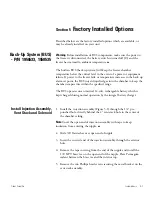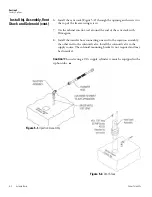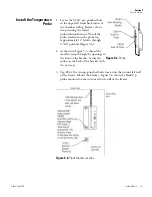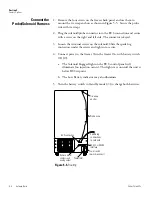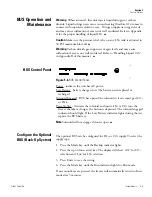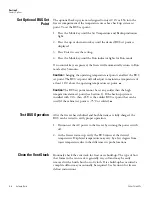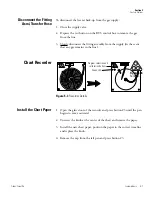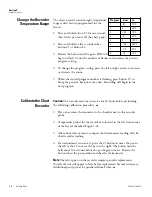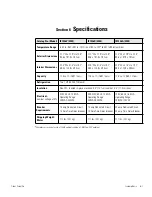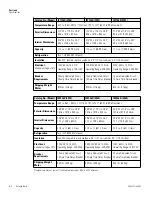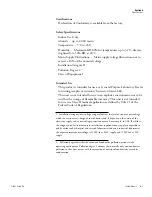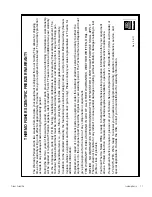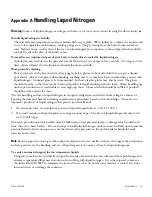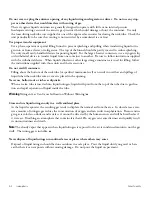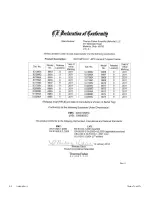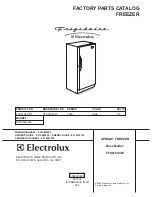
Isotemp Basic A-1
Fisher Scientific
Appendix A
Handling Liquid Nitrogen
Warning
Contact of liquid nitrogen or cold gas with skin or eyes may cause serious freezing (frostbite) injury.
s
Handle liquid nitrogen carefully.
The extremely low temperature can freeze human flesh very rapidly. When spilled on a surface the liquid tends
to cover it completely and intimately, cooling a large area. The gas issuing from the liquid is also extremely
cold. Delicate tissue, such as that of the eyes, can be damaged by an exposure to the cold gas which would be
too brief to affect the skin of the hands or face.
Never allow any unprotected part of your body to touch objects cooled by liquid nitrogen.
Such objects may stick fast to the skin and tear the flesh when you attempt to free yourself. Use tongs to with-
draw objects immersed in the liquid, and handle the object carefully.
Wear protective clothing.
Protect your eyes with a face shield or safety goggles (safety glasses without side shields do not give adequate
protection). Always wear gloves when handling anything that is, or may have been, in immediate contact with
liquid nitrogen. Insulated gloves are recommended, but heavy leather gloves may also be used. The gloves
should fit loosely, so that they can be thrown off quickly if liquid should splash into them. When handling liq-
uid in open containers, it is advisable to wear high-top shoes. Trousers (which should be cuffless if possible)
should be worn outside the shoes.
The safe handling and use of liquid nitrogen in cryogenic refrigerators and dewar flasks is largely a matter of
knowing the potential hazards and using common-sense procedures based on that knowledge. There are two
important properties of liquid nitrogen that present potential hazards:
1. It is extremely cold. At atmospheric pressure, liquid nitrogen boils at -320°F (-196°C).
2. Very small amounts of liquid vaporize into large amounts of gas. One liter of liquid nitrogen becomes 24.6
cu. ft. (700l) of gas.
The safety precautions in this booklet must be followed to avoid potential injury or damage which could result
from these two characteristics. Do not attempt to handle liquid nitrogen until you read and fully understand the
potential hazards, their consequences, and the related safety precautions. Keep this booklet handy for ready
reference and review.
Note
Because argon is an inert gas whose physical properties are very similar to those of nitrogen, the precautions
and safe practices for the handling and use of liquid argon are the same as those for liquid nitrogen.
s
Use only containers designed for low temperature liquids.
Cryogenic containers are specifically designed and made of materials that can withstand the rapid changes and
extreme temperature differences encountered in working with liquid nitrogen. Even these special containers
should be filled SLOWLY to minimize the internal stresses that occur when any material is cooled. Excessive
internal stresses can damage the container.
Содержание Isotemp Basic -86C
Страница 17: ......
Страница 29: ......
Страница 41: ......
Страница 47: ...A 4 Isotemp Basic Thermo Scientific ...
Страница 48: ...Fisher Scientific 300 Industry Drive Pittsburgh PA 15275 USA www fishersci com ...

